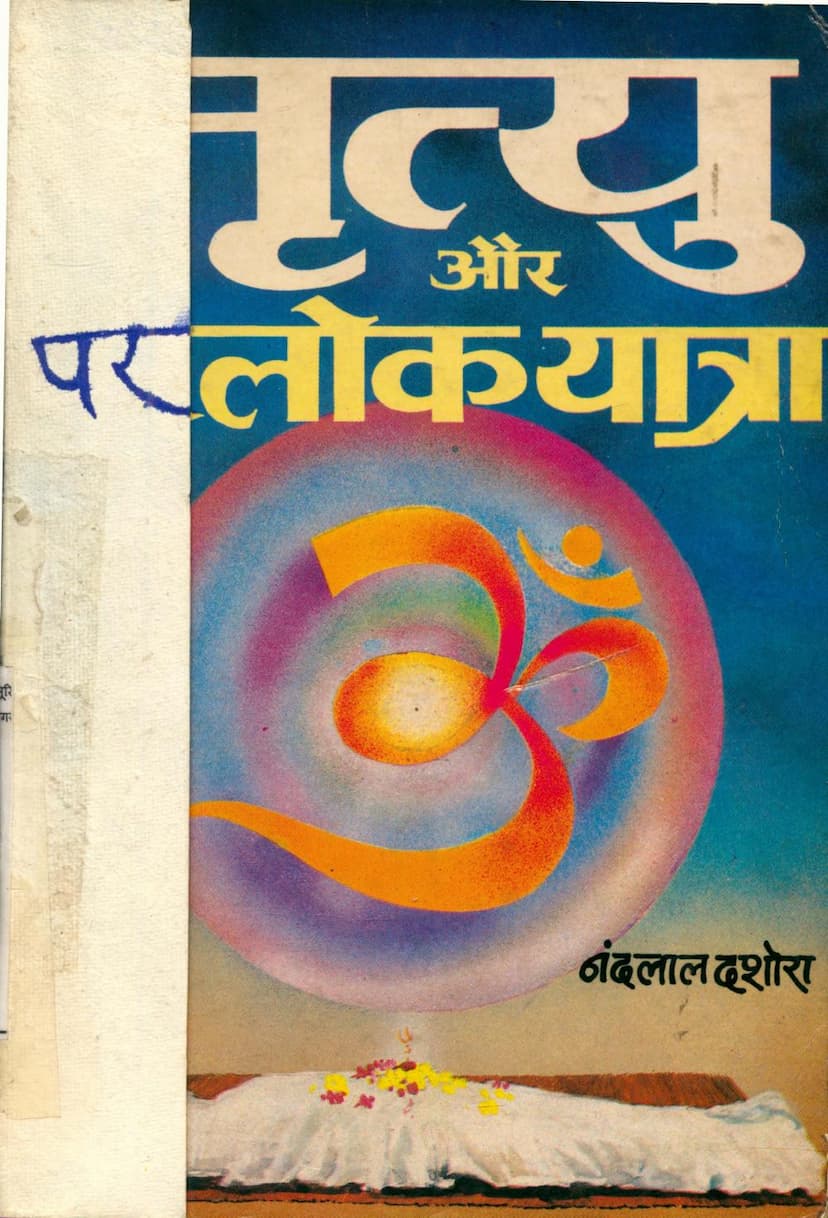Mrutyu Aur Parlok Yatra
Added to library: September 2, 2025

Summary
Here is a comprehensive summary of the Jain text "Mrutyu Aur Parlok Yatra" by Nandlal Dashora, based on the provided pages:
Book Title: Mrutyu Aur Parlok Yatra (Death and the Journey to the Otherworld) Author: Nandlal Dashora Publisher: Randhir Book Sales, Haridwar
Core Theme: This book, written from a Jain philosophical and spiritual perspective, aims to provide comprehensive information about death and the subsequent journey of the soul (Jivatma) through various realms. It seeks to demystify the process of death and afterlife, offering insights into reincarnation, the nature of existence beyond the physical body, and ultimately, the path to liberation (Moksha).
Key Concepts and Topics Covered:
- The Nature of Death: Death is presented as an eternal truth of life, not an end but a transition. The book emphasizes that the quality of one's death and subsequent journey is within human control, facilitated by divine forces, but often hindered by human ignorance.
- Post-Death Existence: The text addresses fundamental questions like "What is death?", "Is there life after death?", "What happens to the soul after death?", and "How and why does reincarnation occur?".
- The Soul (Jivatma) and Its Bodies:
- Brahma, Atma, and Sharir: The book explores the fundamental principles of the Absolute (Brahma), the individual soul (Atma), and the physical body (Sharir).
- Jivatma's Form: It delves into the nature of the Jivatma, its relationship with the Supreme Soul (Paramatma), its immortality, and its continuous development.
- Gross, Subtle, and Causal Bodies: A significant portion of the text is dedicated to explaining the three bodies that the soul inhabits: the physical (Sthool Sharir), the subtle (Sukshma Sharir), and the causal (Karan Sharir). These are described as different layers or vehicles for the soul's experience and evolution.
- The Journey to the Otherworld (Parlok Yatra):
- Post-Death Experience: It describes the soul's experience immediately after death, including its attachment to the physical body, the process of cremation, the soul's temporary residence in its home, and its entry into the subtle realms.
- The Intermediate State (Antaral): The book discusses the state of souls wandering in intermediate realms before their next rebirth.
- The Seven Lokas (Realms): The text outlines various realms, including the physical world (Bhu Lok), the desire realm (Kaam Lok), the mental realm (Manas Lok), the heavenly realms (Swarga Lok), the intellectual realms (Buddhi Lok), the spiritual realms (Atma Lok), and the ultimate realm of liberation (Nirvana Lok). The density and subtlety of these realms, corresponding to the soul's state, are explained.
- The Soul's Progression: The gradual evolution of the Jivatma through these different realms and subtle bodies is detailed, culminating in the ultimate goal of self-realization.
- Reincarnation and Avatars: The causes and mechanisms of rebirth are explained, along with the concept of divine incarnations (Avatars) who descend to guide humanity.
- The Role of Consciousness and Energy: The book posits that consciousness and energy are fundamental to the creation of both the subtle and gross worlds. The physical universe is seen as a manifestation of these energies.
- The Concept of God and Creation: The text touches upon the origin of the universe from the supreme, formless Brahman, the manifestation of God (Ishwar) as the creator and sustainer, and the subsequent creation of deities and the cosmic order.
- Spiritual Practices and Knowledge: The importance of spiritual knowledge, practices like meditation, and the guidance from enlightened beings are highlighted as means to understand these concepts and progress on the spiritual path.
- The Ultimate Goal: Moksha (Liberation): The book describes Moksha as the ultimate state of freedom from the cycle of birth and death, achieved through self-realization and the dissolution of the ego. It explains that true liberation comes from realizing the unity of the individual soul with the Supreme Brahman.
Author's Approach: Nandlal Dashora aims to present this complex spiritual knowledge in a clear and accessible manner for the common reader. He draws upon various spiritual traditions, including Vedic scriptures (Vedas, Upanishads, Puranas, Brahma Sutras), and acknowledges contributions from modern spiritual thinkers like Madame Blavatsky, Annie Besant, and Acharya Rajneesh. The book attempts to integrate scientific research with spiritual insights where possible.
Overall Purpose: The book serves as a guide for individuals seeking to understand the mysteries of life, death, and the afterlife from a spiritual perspective. It encourages readers to examine their lives, purify their thoughts and actions, and strive towards spiritual evolution for a better future existence and ultimate liberation. The author hopes to resolve readers' curiosities and inspire them to make positive changes in their life practices.